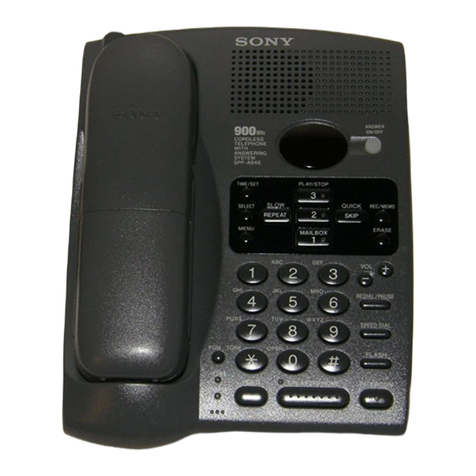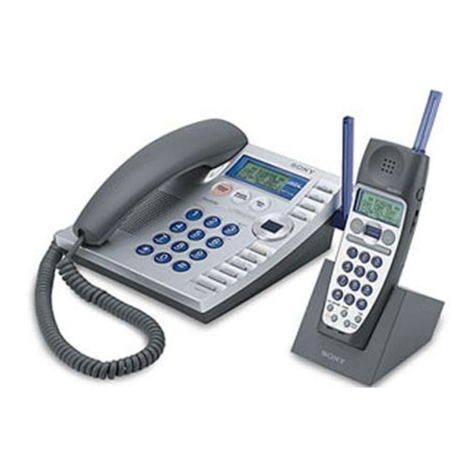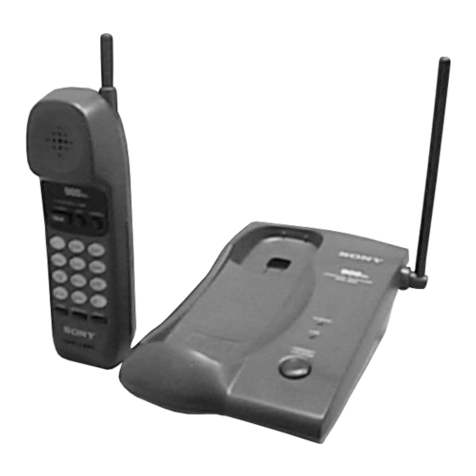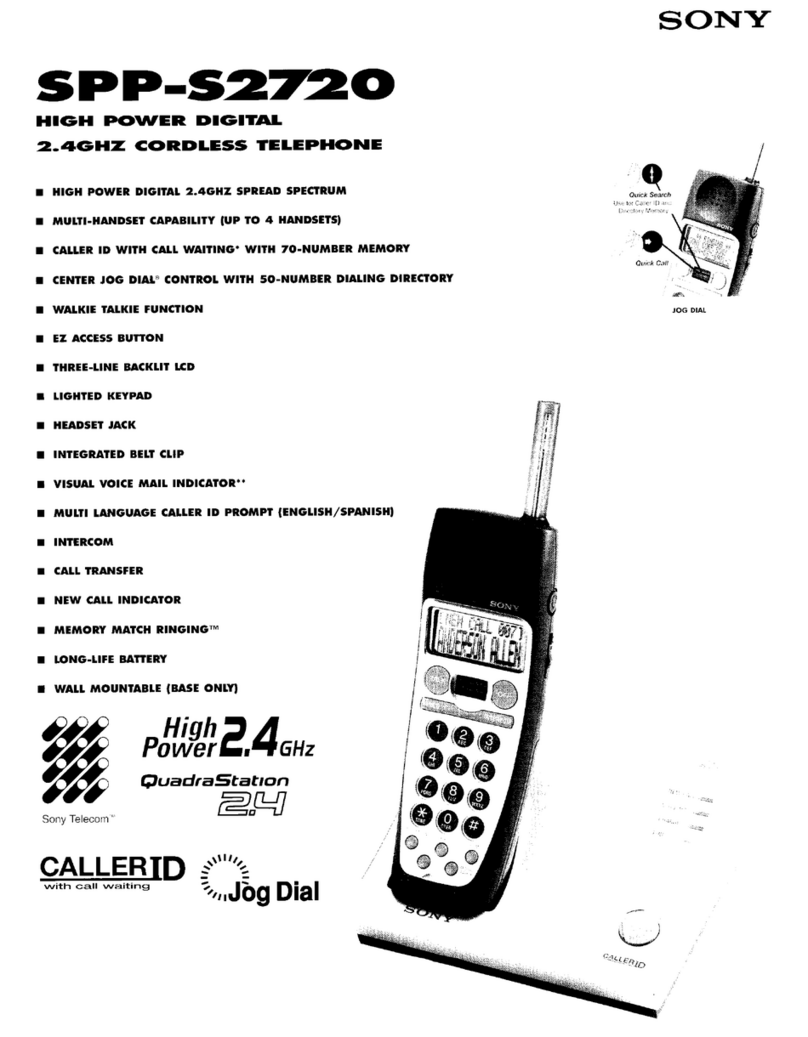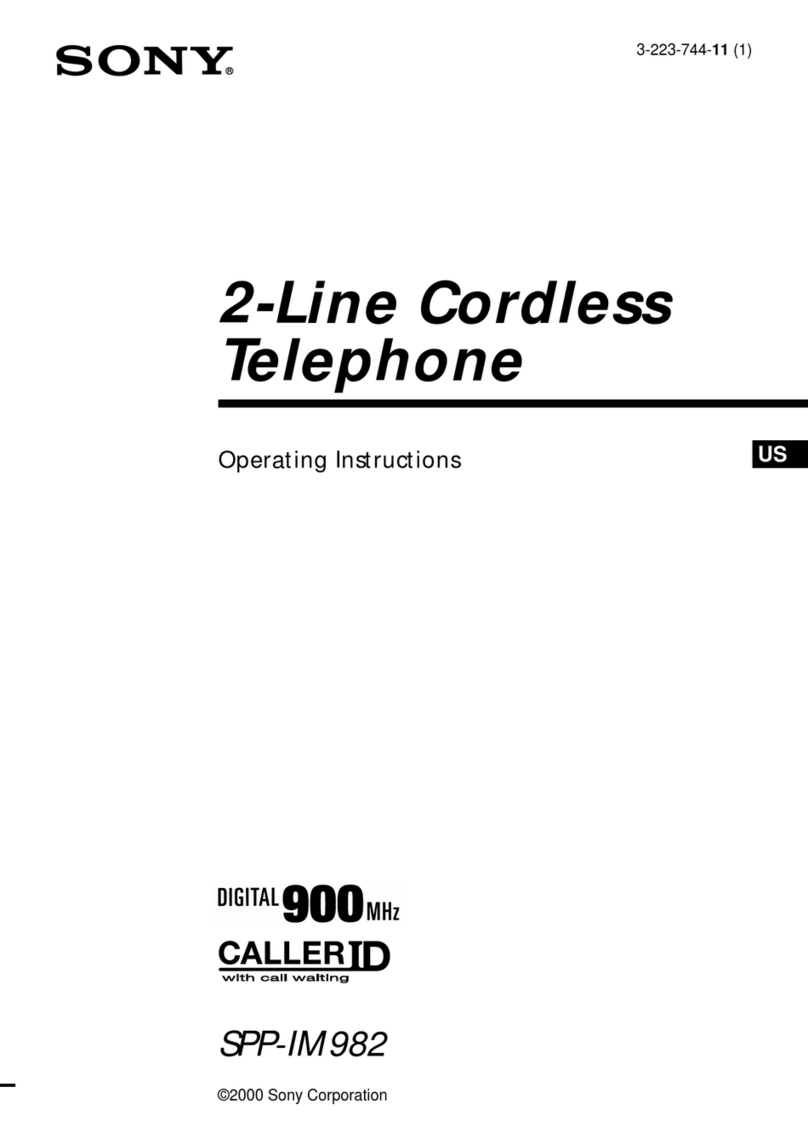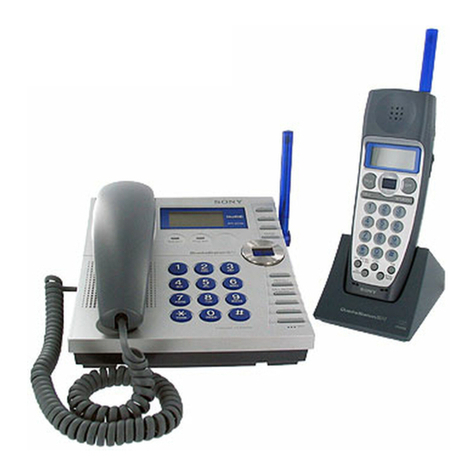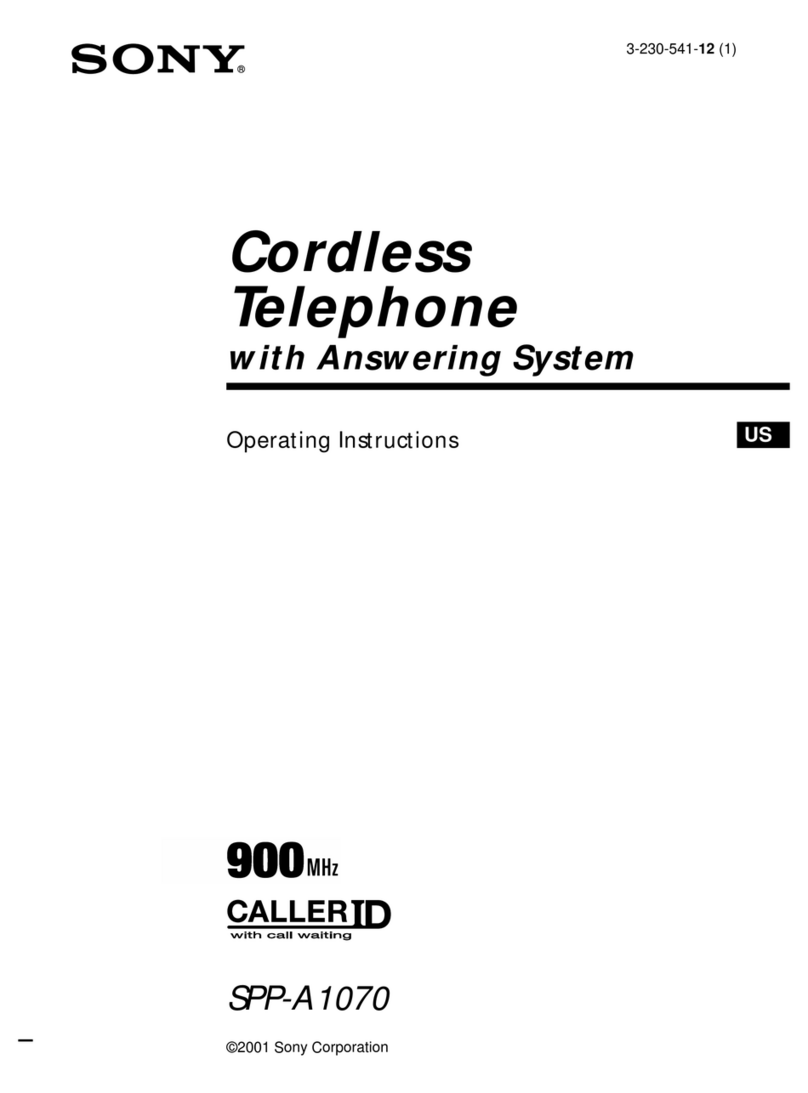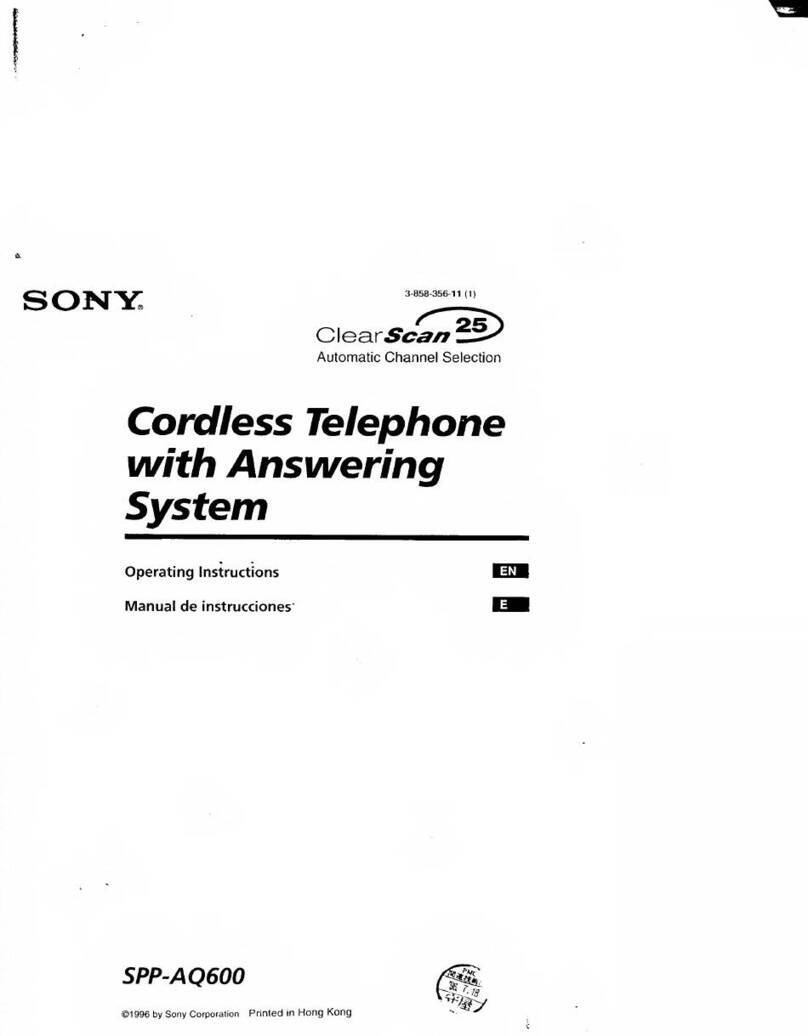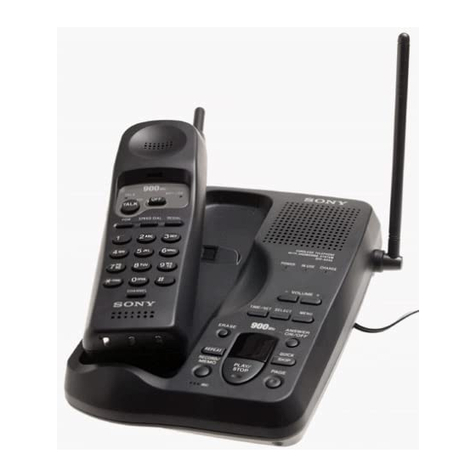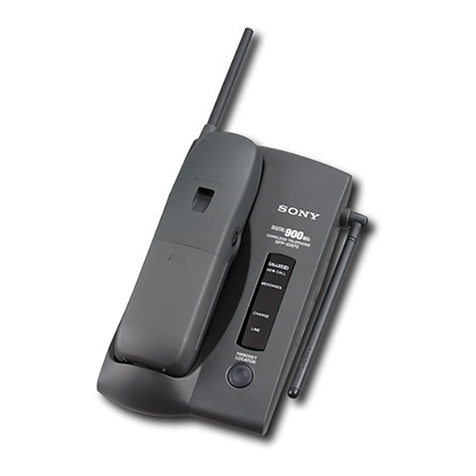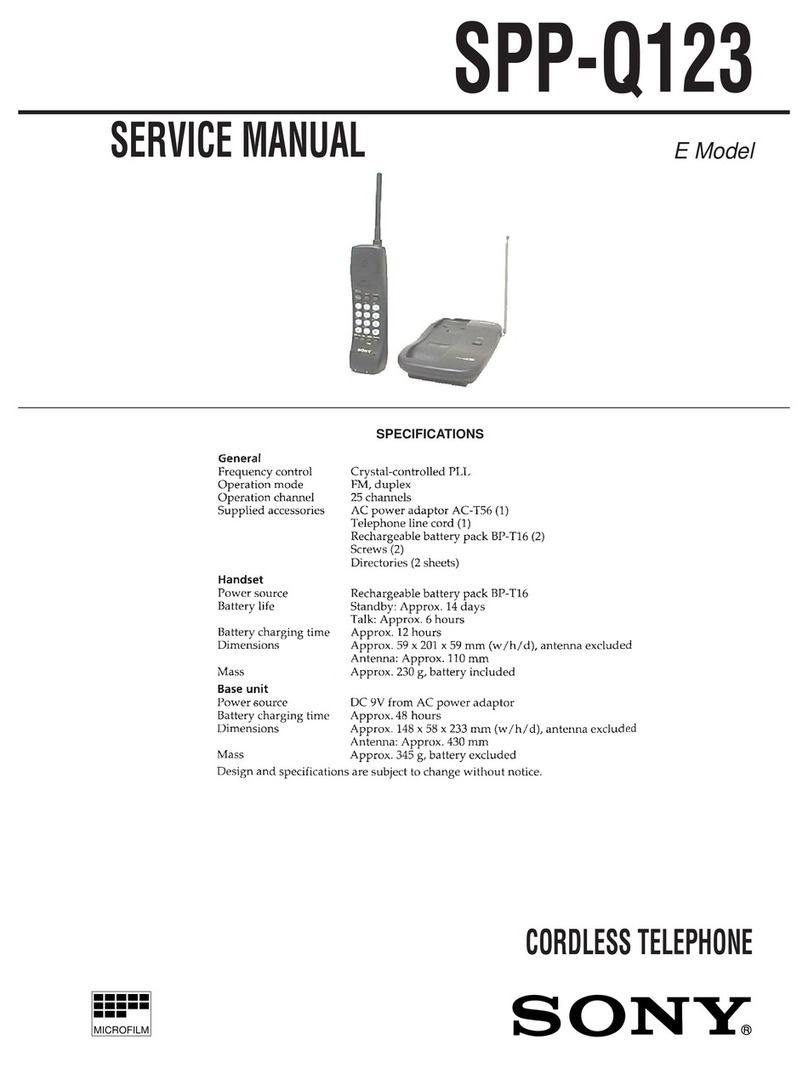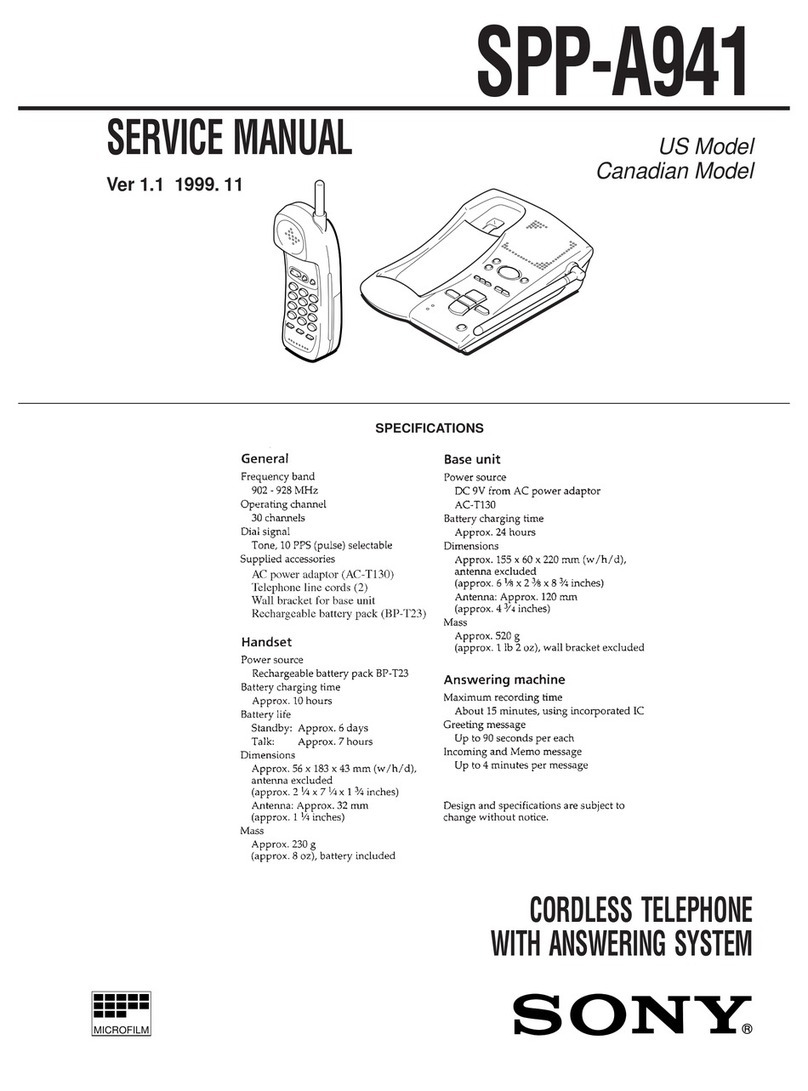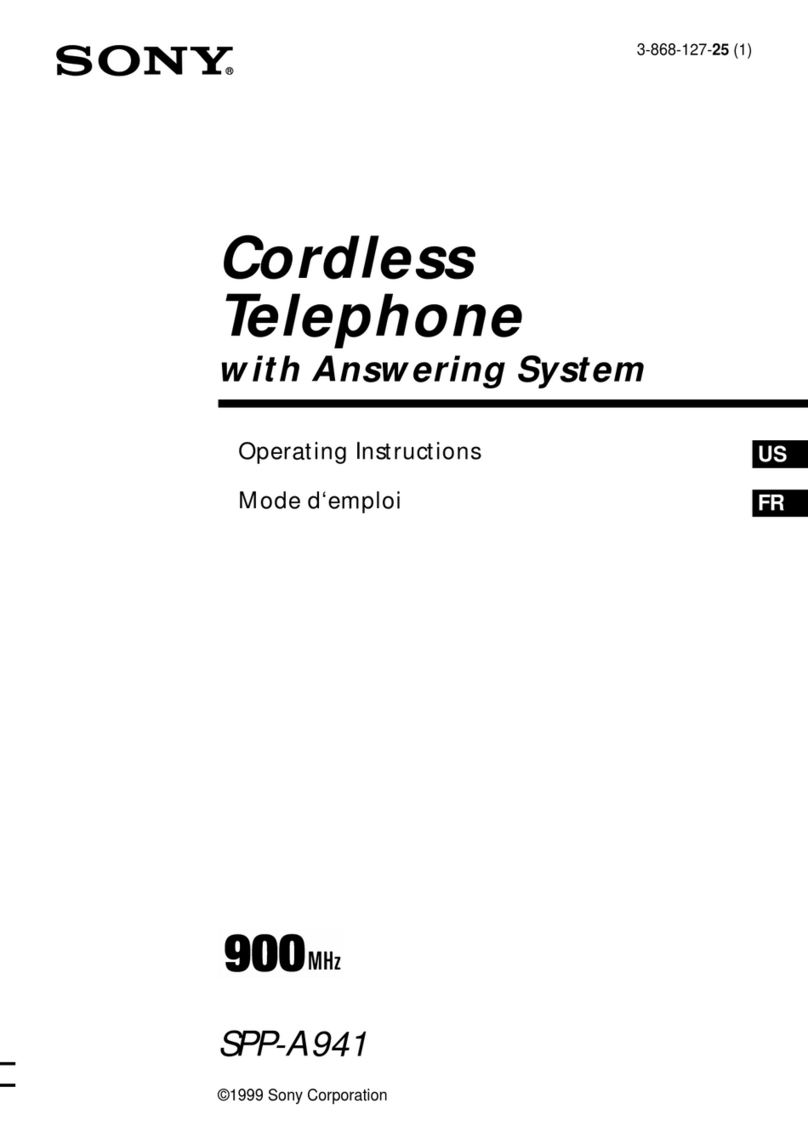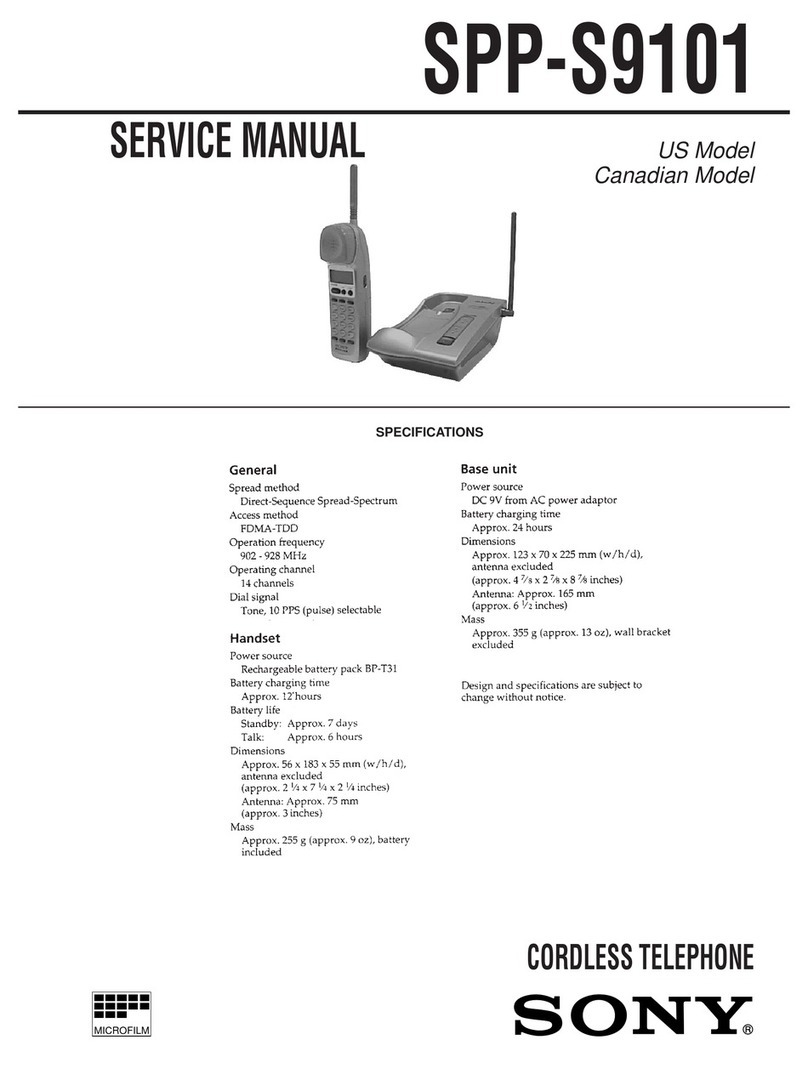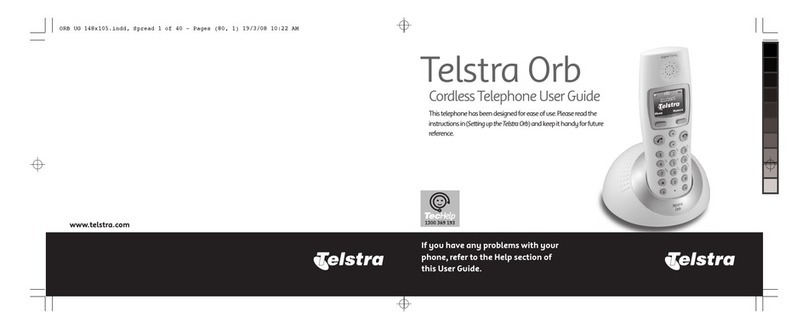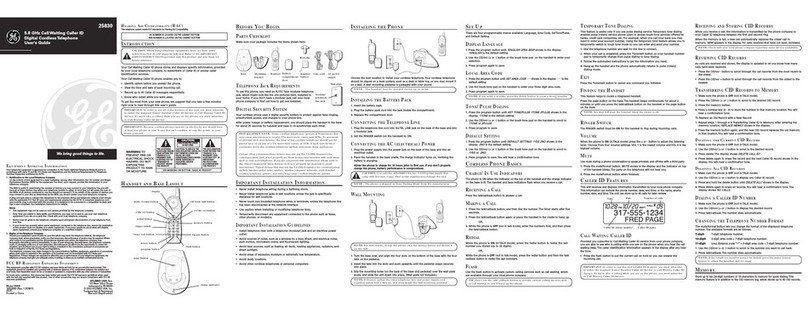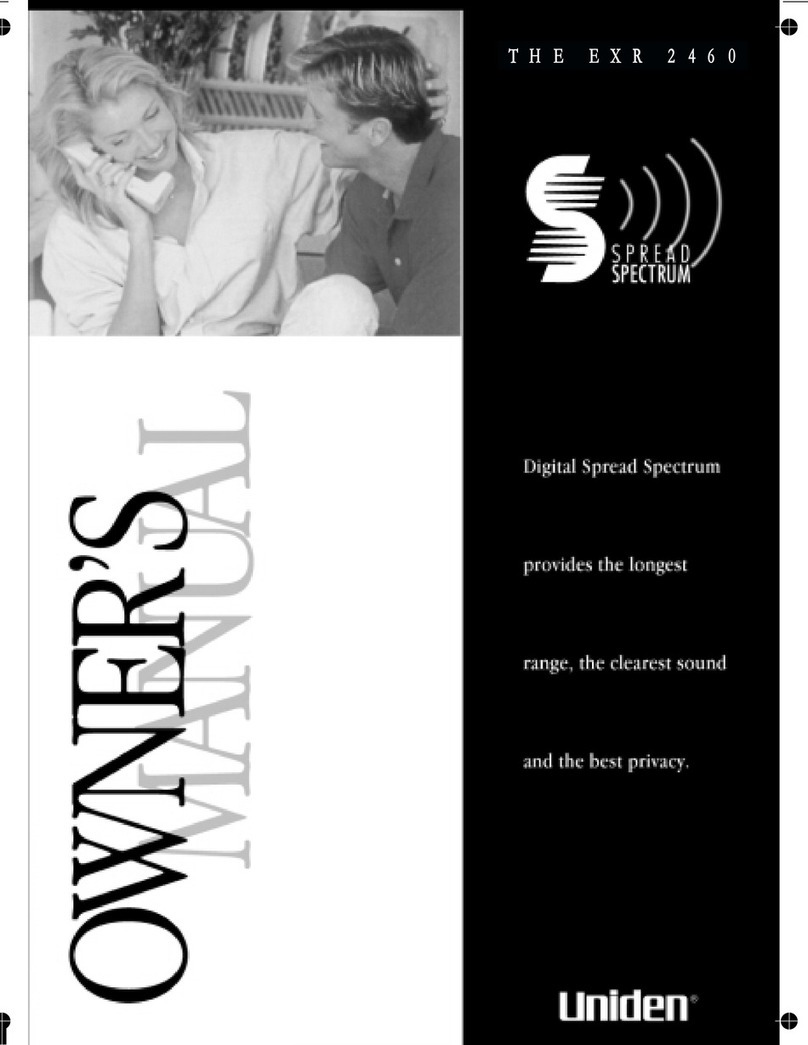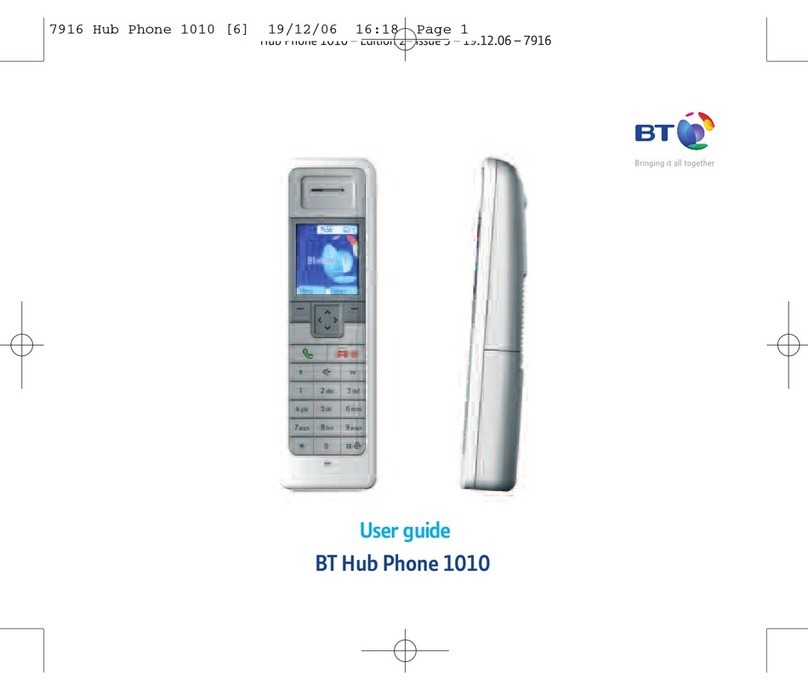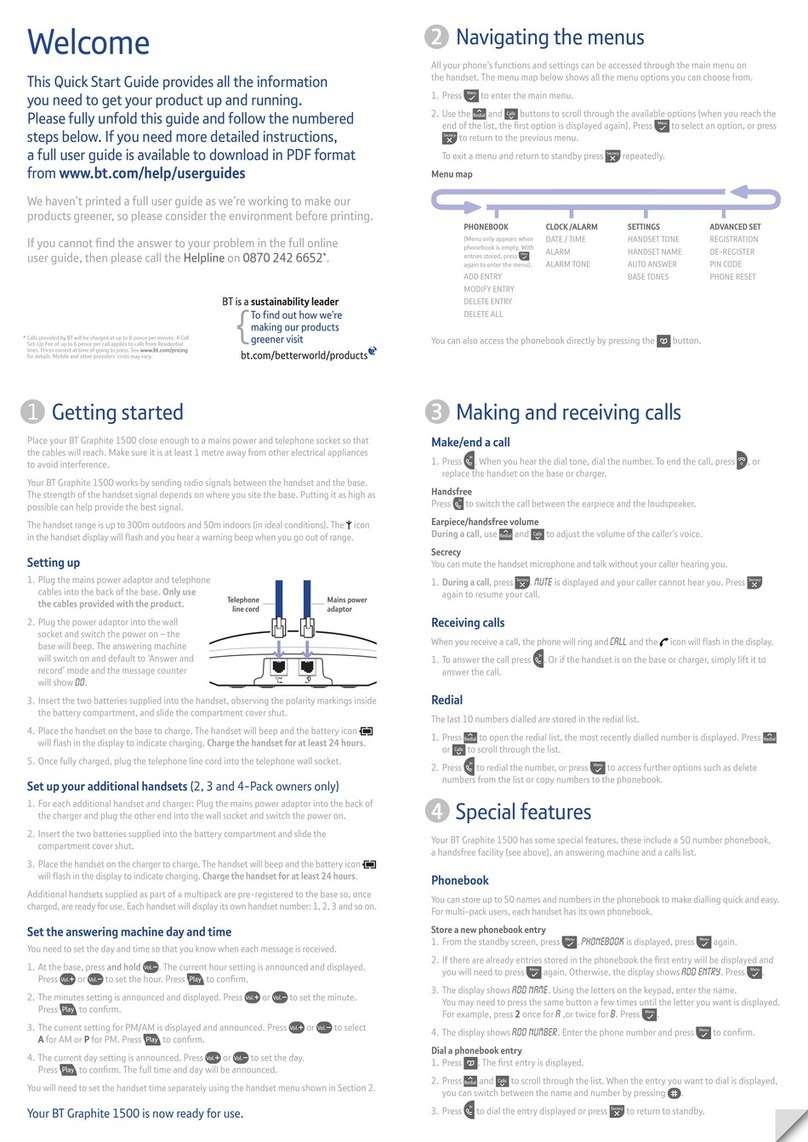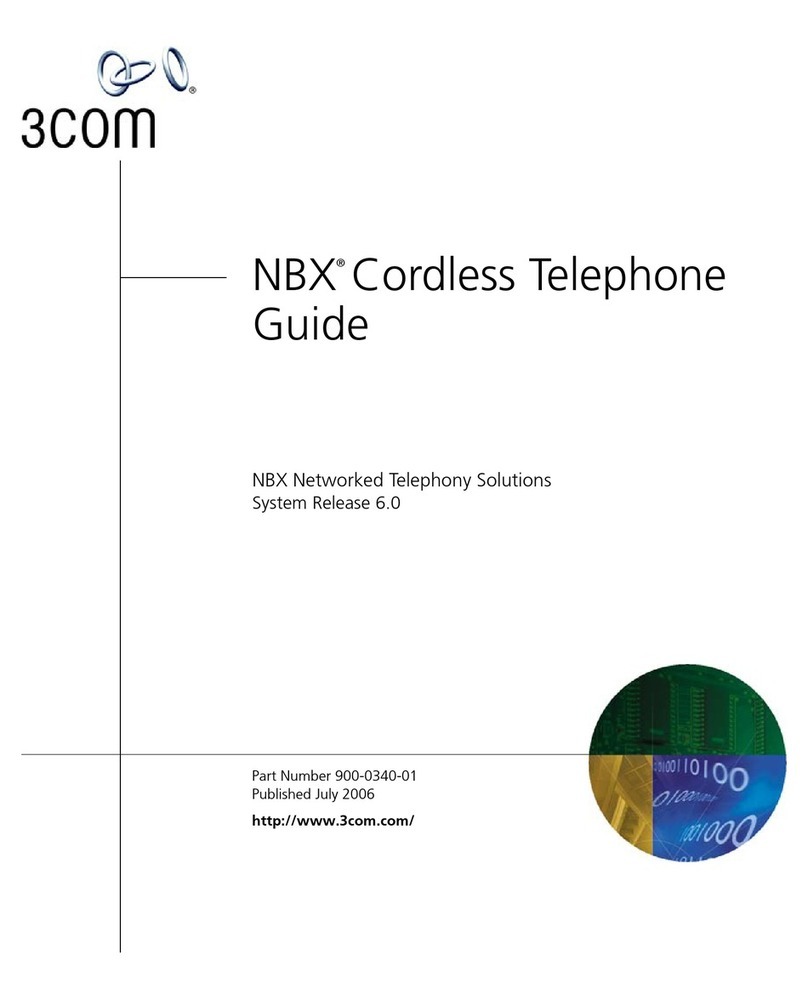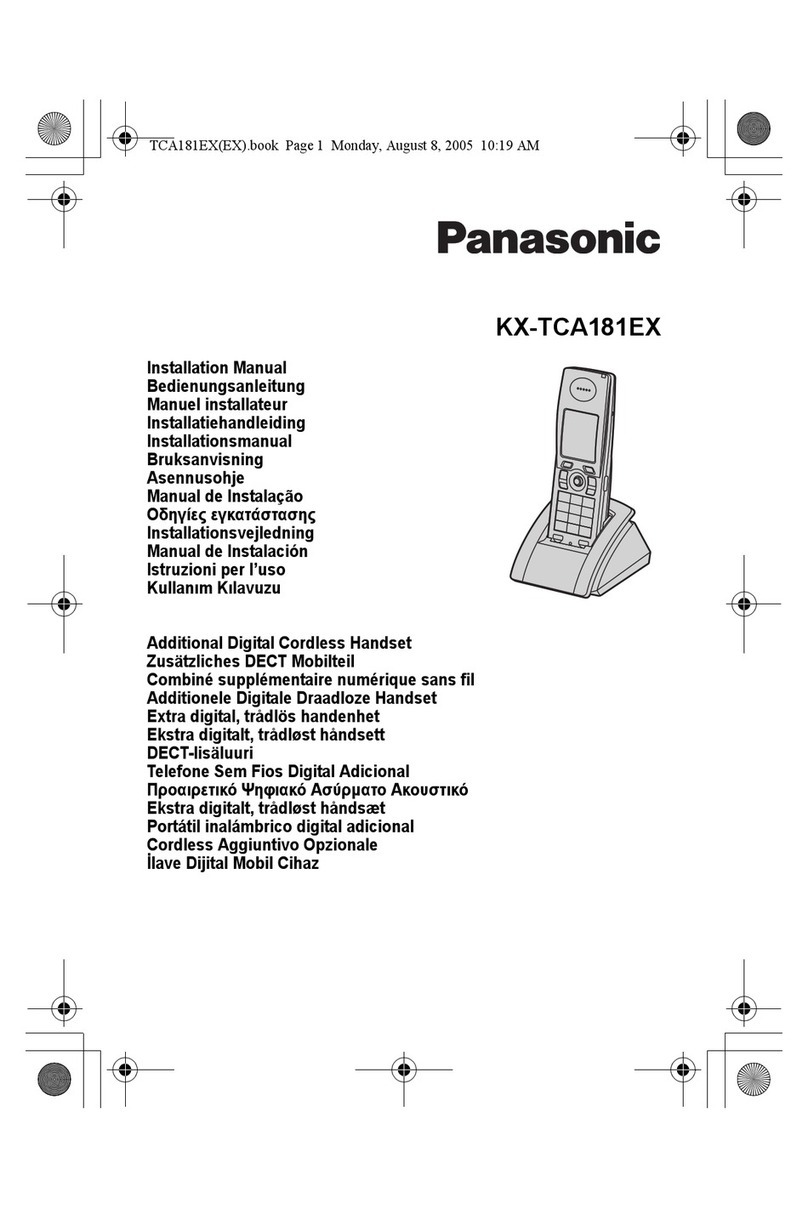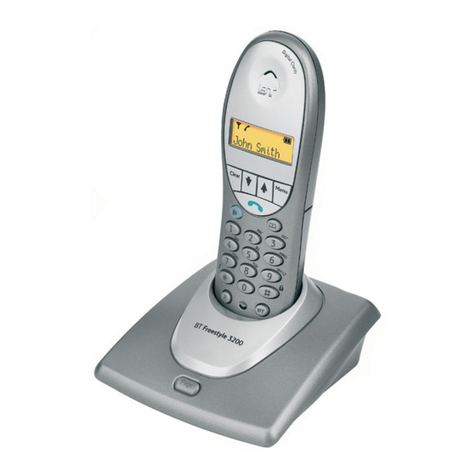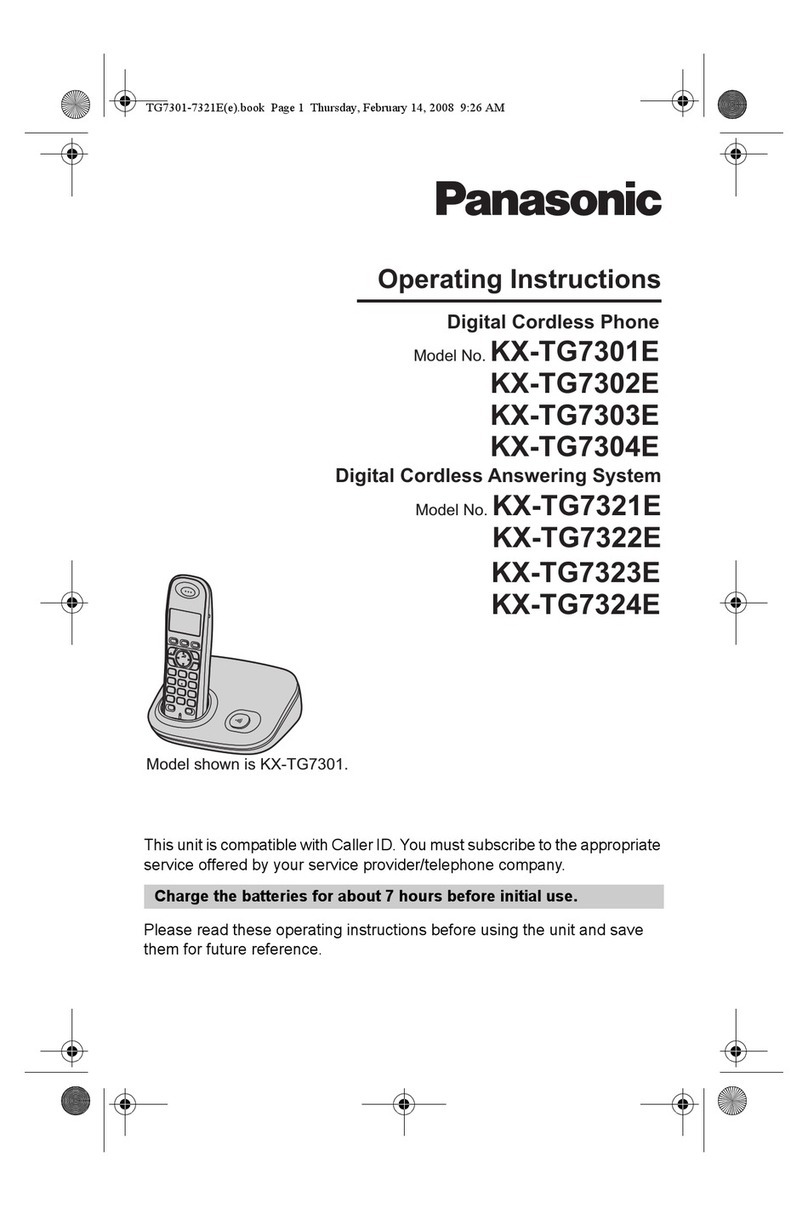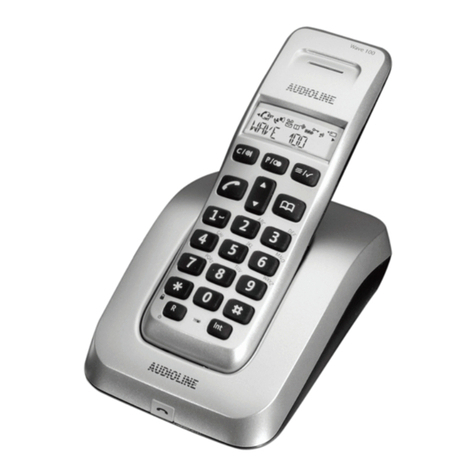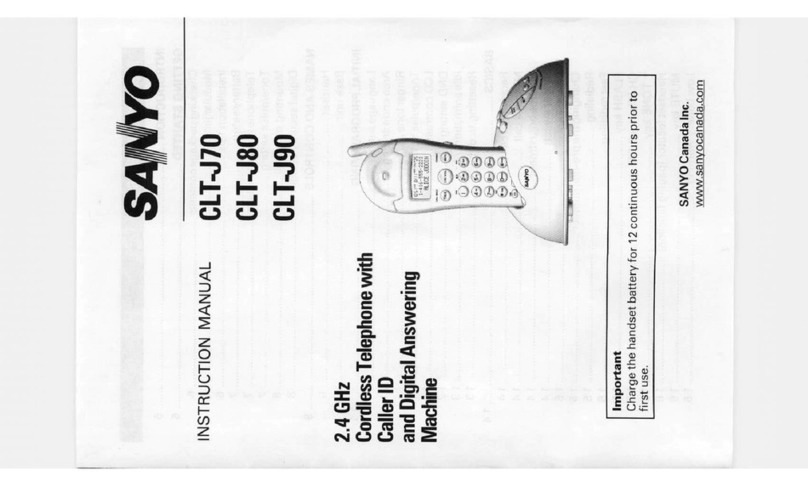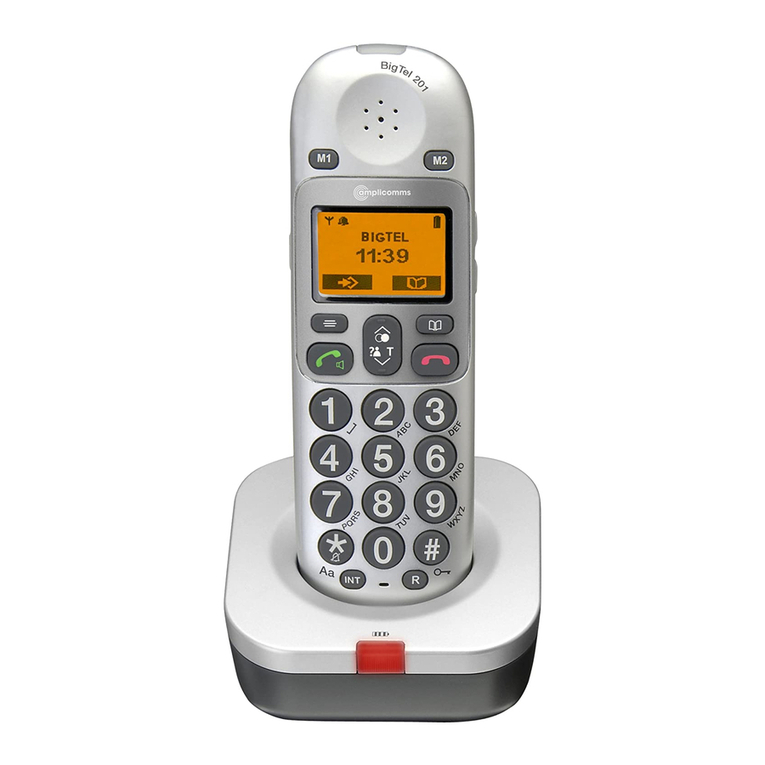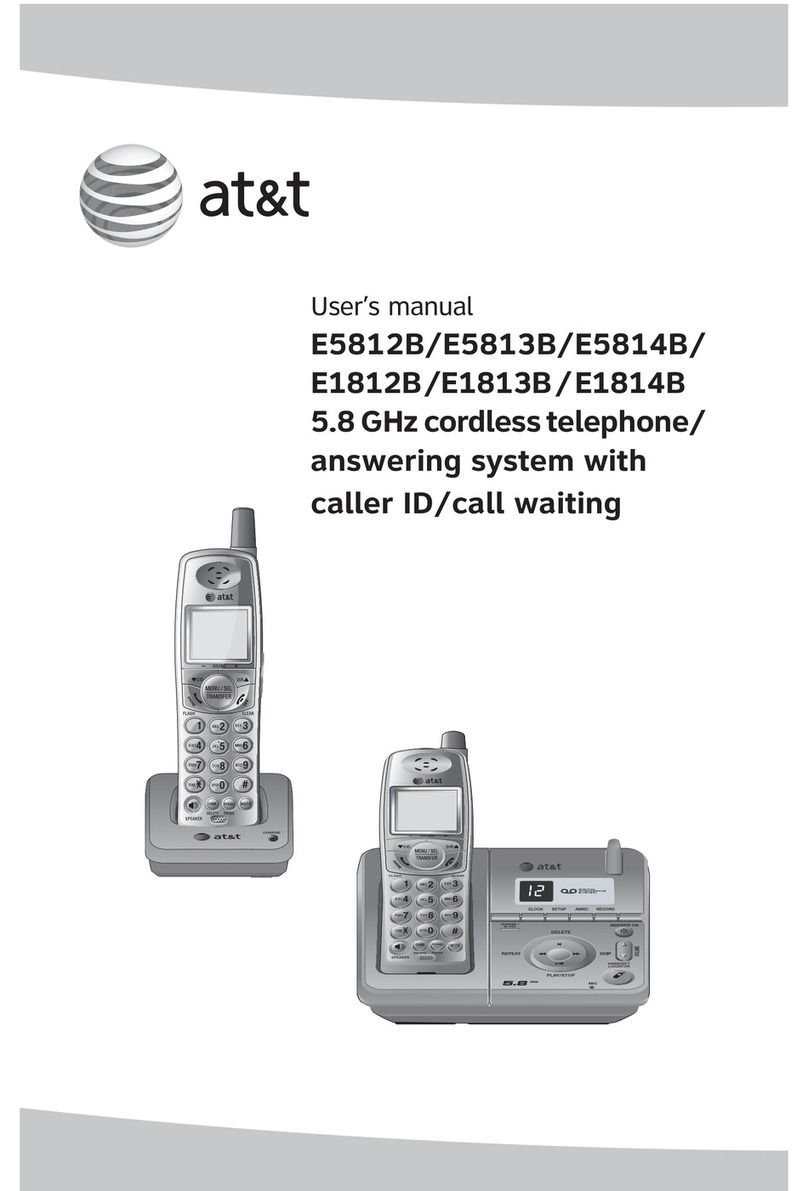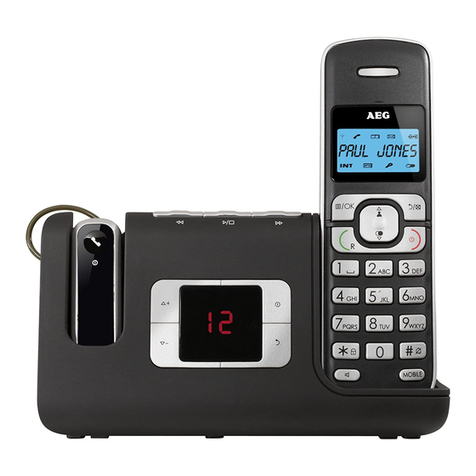2
TABLE OF CONTENTS
1. GENERAL .......................................................................... 3
2. DISASSEMBLY
2-1. Battery Case LID (Handset)................................................ 12
2-2. Cabinet (Rear) (Handset) .................................................... 12
2-3. Hand Main Board (Handset) ............................................... 12
2-4. Cabinet and Boards (Base Unit) ......................................... 12
3. 900 MHz SYSTEM OPERATION
3-1. Access Method.................................................................... 13
3-2. Protocol ............................................................................... 13
4.TEST MODE
4-1. Base Unit Test Mode A ....................................................... 16
4-2. Base Unit Test Mode B ....................................................... 17
4-3. Handset Test Mode.............................................................. 18
4-4. RF Testing ........................................................................... 19
5. ELECTRICAL ADJUSTMENTS
5-1. Base Unit Section................................................................ 22
5-2. Handset Section .................................................................. 23
6. DIAGRAMS
6-1. IC Block Diagrams ............................................................. 25
6-2. Printed Wiring Boards – Base Unit/LED Section –............ 26
6-3. Schematic Diagram – Base Unit (1/2) Section – ................ 28
6-4. Schematic Diagrams – Base Unit (2/2)/LED Section –...... 29
6-5. Printed Wiring Board – Handset Section – ......................... 30
6-6. Schematic Diagram – Handset Section –............................ 31
6-7. IC Pin Functions ................................................................. 32
7. EXPLODEDVIEWS
7-1. Handset Section .................................................................. 35
7-2. Base Unit Section................................................................ 36
8. ELECTRICAL PARTS LIST ........................................ 37
Notes on chip component replacement
• Never reuse a disconnected chip component.
• Notice that the minus side of a tantalum capacitor may be
damaged by heat.
SAFETY-RELATED COMPONENT WARNING !!
COMPONENTS IDENTIFIED BY MARK !OR DOTTED LINE
WITH MARK !ON THE SCHEMATIC DIAGRAMS AND IN
THE PARTS LIST ARE CRITICAL TO SAFE OPERATION.
REPLACE THESE COMPONENTS WITH SONY PARTS
WHOSE PART NUMBERS APPEAR AS SHOWN IN THIS
MANUAL OR IN SUPPLEMENTS PUBLISHED BY SONY.
ATTENTION AU COMPOSANT AYANT RAPPORT
À LA SÉCURITÉ!!
LES COMPOSANTS IDENTIFIÉS PAR UNE MARQUE !
SUR LES DIAGRAMMES SCHÉMATIQUES ET LA LISTE
DES PIÈCES SONT CRITIQUES POUR LA SÉCURITÉ DE
FONCTIONNEMENT.NE REMPLACERCES COMPOSANTS
QUE PAR DES PIÈCES SONY DONT LES NUMÉROS
SONT DONNÉS DANS CE MANUEL OU DANS LES
SUPPLÉMENTS PUBLIÉS PAR SONY.

